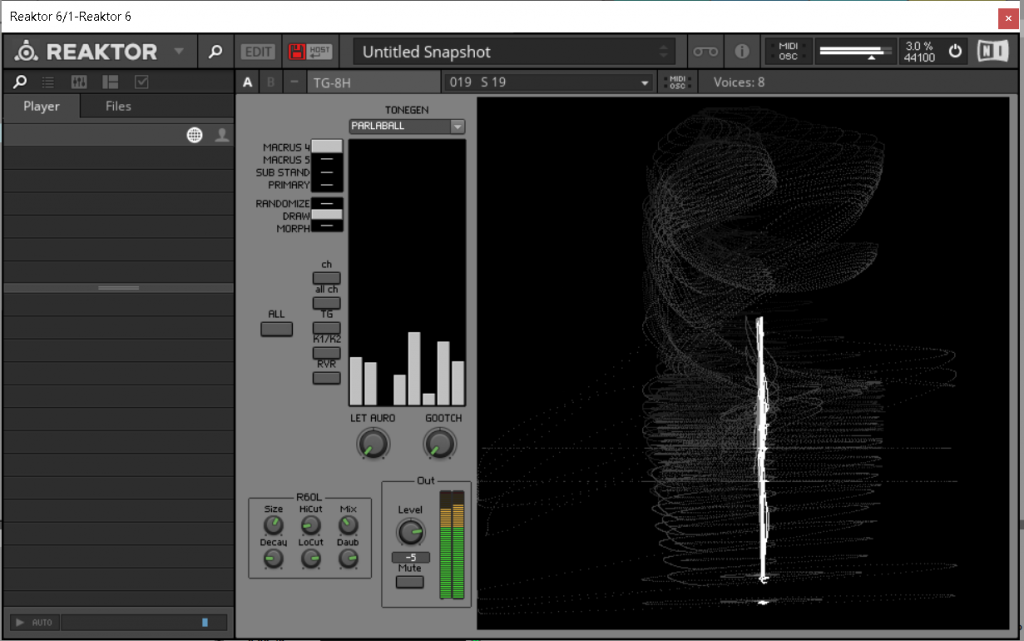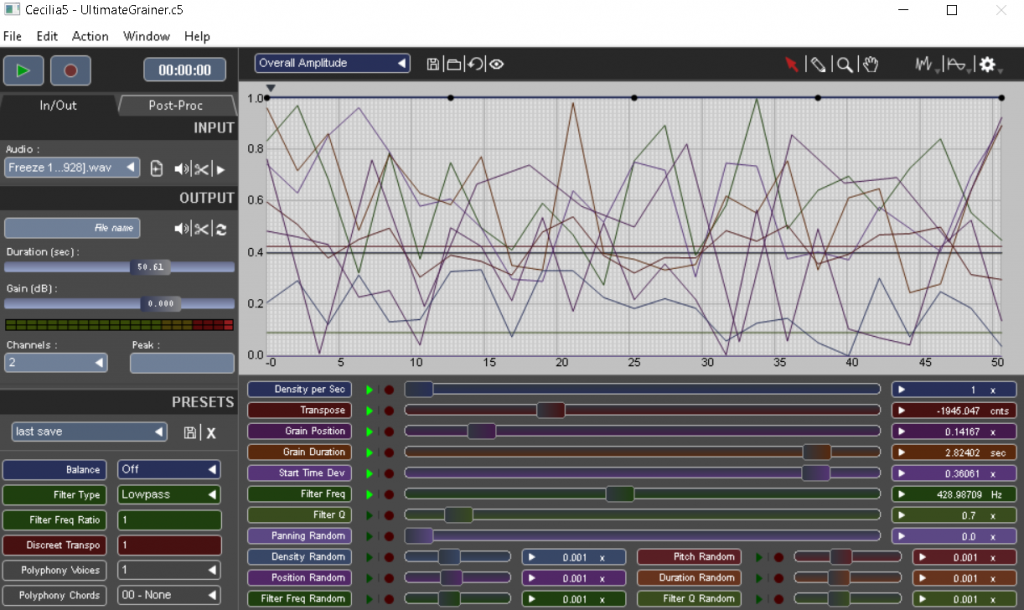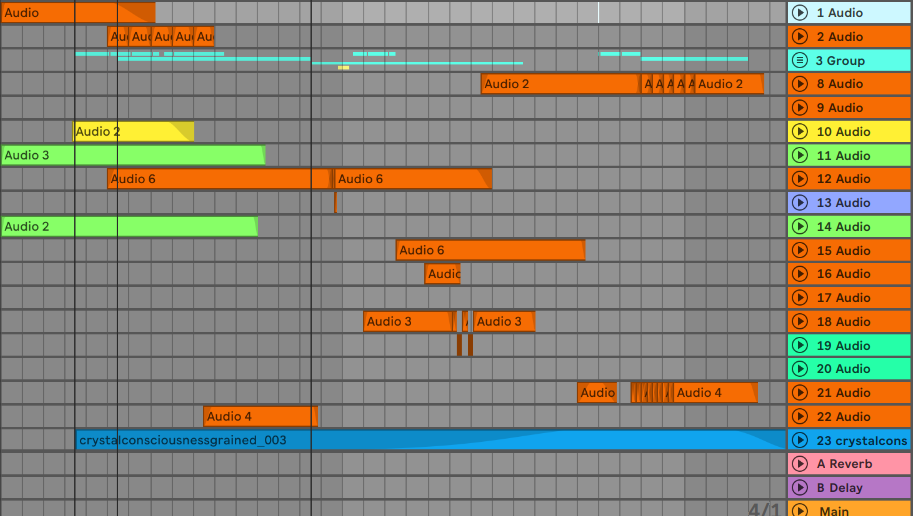Today I spent some time in Ableton working on gathering material to use as samples in future projects. I wanted to explore sounds that have really unique timbre and spectral quality. I’m a big fan of sounds that feel alive, alien, or hard to categorise, so more ways to create these kinds of sounds is always fun for me.
I started out by opening TG8H Lazyfish in Reaktor, as I’m a big fan of the sounds it generates, it has very rich textures and unique timbres/formants which i can only assume are synthesised in really weird ways, I’m not sure of the exact mechanism involved, which makes listening and experimenting even more fun for me. there’s something I think is reminiscent of acousmatic practice about repurposing the really abstract sounds it produces.

I then set up an audio track in ableton to resample the audio, and recorded a long session of me tweaking different parameters randomly, I wasn’t sure of what each one does as they aren’t labelled but I think this kind of experimental process can be generate really interesting results. I wanted to explore deliberately allowing unplanned moments to emerge and not aiming to control the outcome, letting the system generate its own behaviour.

This mirrors Mark Fell’s compositional philosophy that I read about in Structure and Synthesis, he emphasizes creating situations where music happens without direct intervention, essentially setting up rules or systems and witnessing how they evolve. He speaks about using algorithmic processes and minimal interaction, describing his work like “shed building”: you plan a structure but leave many decisions open, allowing the process and materials themselves to determine the final outcome. This resonates very strongly with what I’ve been interested in exploring: I’m not sculpting every moment with precision, instead I’m focusing more on observing and curating emergent sonic behaviours.
I bounced the audio, then opened Cecelia5’s “Ultimate grainer” module. I set up the stochastic generator in it to randomly generate unique elnvelopes for specific parameters, such as grain size, grain duration, and transposition. I think granular synthesis allows for some really unique possibilities, it recontextuallises sounds to become essentially unrecognisable. I borrowed Microsound by Curtis Roads from the library and he talks about granular synthesis a lot, he says it opens up artistic possibilities previously unimagined. This reflects my own personal experience, by setting up randomly generated parameter modulation in cecelia5 I encountered unexpected textures and timbral shifts that felt completely new to me. there was a really cool range of noises; moments of shimmer, glitch, and strange spectral movement that felt like they came from a living organism.

I imported the output from Cecelia5 into Ableton and began chopping up individual snippets of the sample, capturing interesting grains, gestures, and textures to save as samples. I found that many of these fragments had compositional potential on their own, so I began constructing a new piece almost entirely from these sample slices.

Looking forward, I’d like to explore further by creating my own modular systems in that evolve over time uniquely, i’m really interested in Maxmsp and I think it allows for a lot of possibilities in this area. I also want to explore formant synthesis and vocal like behaviour in synthetic systems, as some of the sounds produced in TG8H Lazyfish really intrigued me as they were almost like ghostly voices. I think this can allow for a lor of possibilities. Another thing I want to explore is building generative patches that develop in response to incoming sound, I think this could be part of how TG8H Lazyfish Works, it sounded like the sound reacted to the output itself, almost as if the spectral image itself was controlling parameters. This idea is super intiguing to me, and when I figure out Maxmsp I want to explore this.
Overall this experiment affirmed to me that letting go of control can offer very interesting results. Rather than dictating every decision, I’m realising how much my process orients around learning to set conditions and listen to what unfolds, almost like I’m guiding the music to create itself rather than translating a ‘divine idea’ that struck me.
Leave a Reply